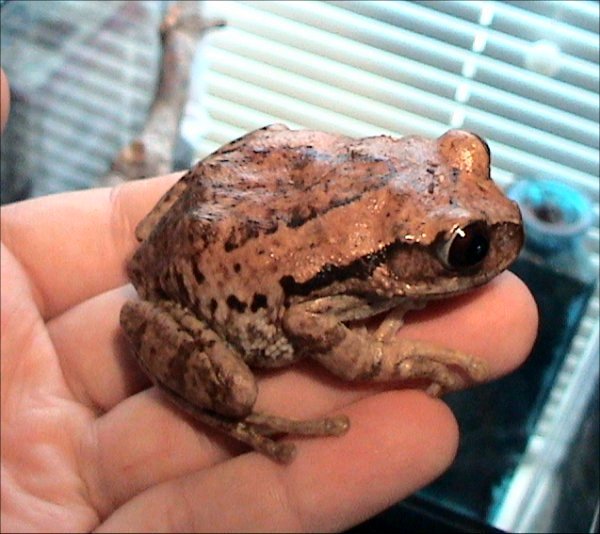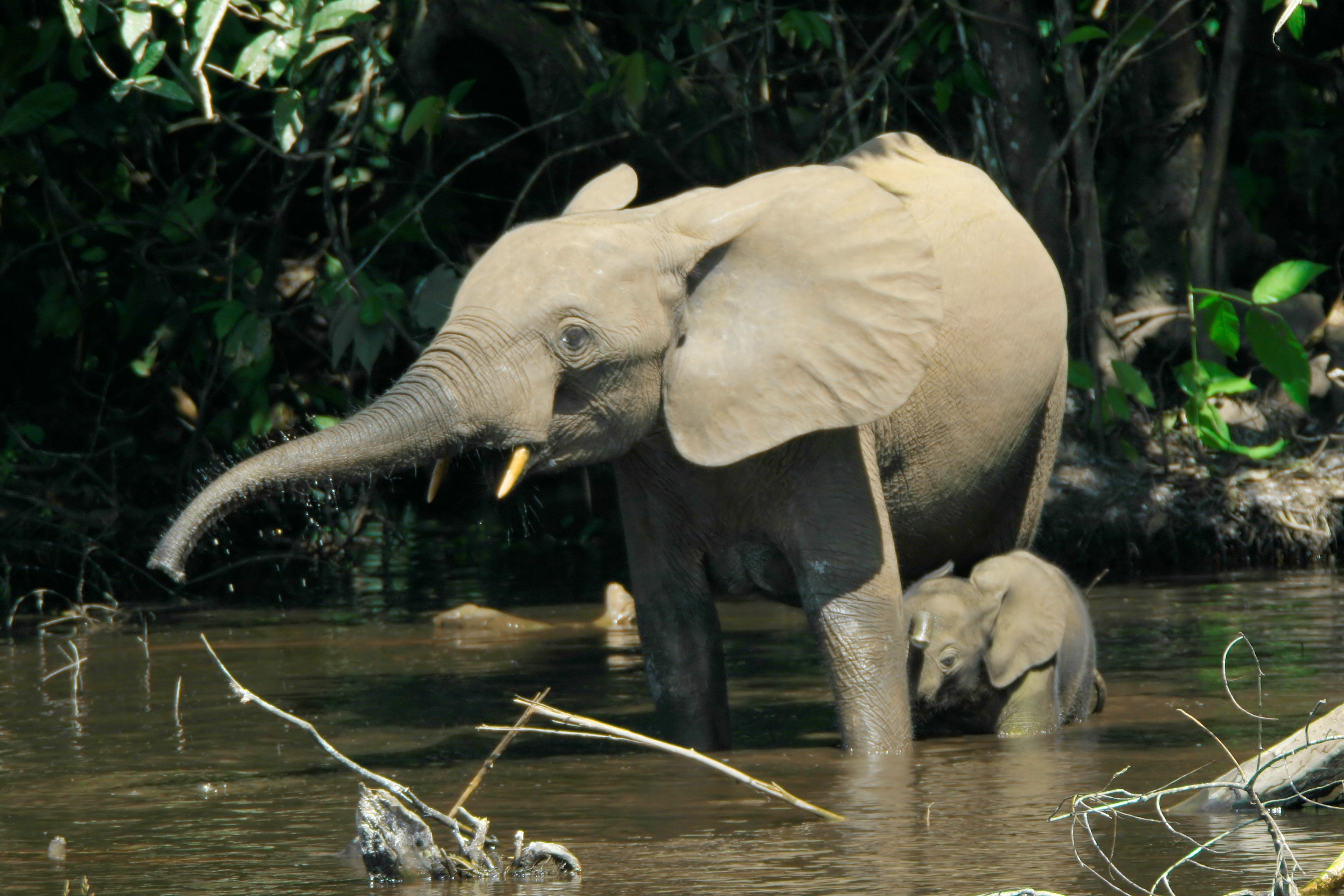|
Leptopelis Macrotis
''Leptopelis macrotis'', sometimes called the big-eyed forest tree frog, is a species of frog in the family Arthroleptidae. It is found in the rainforests of Sierra Leone, southern Guinea, Liberia, Ivory Coast, and southern Ghana. Notice that similar common name "big-eyed tree frog" is sometimes used for '' Leptopelis vermiculatus'' from Tanzania and for '' Litoria exophthalmia'' from New Guinea. Description ''Leptopelis macrotis'' is a large ''Leptopelis'' species: females measure in snout–vent length, while males are more modest at SVL. The dorsum is smooth and transversely-striped in shades of brown. The tympanum is large. The feet are fully webbed. Habitat and conservation Its natural habitats are primary rainforests at elevations of above sea level. It lives arboreally along streams; males can often be heard calling from branches near streams some 5–10 m above the ground. ''Leptopelis macrotis'' is a relatively common species. However, because it relies on good (i. ... [...More Info...] [...Related Items...] OR: [Wikipedia] [Google] [Baidu] |
Frog
A frog is any member of a diverse and largely semiaquatic group of short-bodied, tailless amphibian vertebrates composing the order (biology), order Anura (coming from the Ancient Greek , literally 'without tail'). Frog species with rough skin texture due to wart-like parotoid glands tend to be called toads, but the distinction between frogs and toads is informal and purely cosmetic, not from taxonomy (biology), taxonomy or evolutionary history. Frogs are widely distributed, ranging from the tropics to subarctic regions, but the greatest concentration of species diversity is in tropical rainforest and associated wetlands. They account for around 88% of extant amphibian species, and are one of the five most diverse vertebrate orders. The oldest fossil "proto-frog" ''Triadobatrachus'' is known from the Early Triassic of Madagascar (250Myr, million years ago), but molecular clock, molecular clock dating suggests their divergent evolution, divergence from other amphibians may exte ... [...More Info...] [...Related Items...] OR: [Wikipedia] [Google] [Baidu] |
Agricultural Expansion
Agricultural expansion describes the growth of agricultural land ( arable land, pastures, etc.) especially in the 20th and 21st centuries. The agricultural expansion is often explained as a direct consequence of the global increase in food and energy Energy () is the physical quantity, quantitative physical property, property that is transferred to a physical body, body or to a physical system, recognizable in the performance of Work (thermodynamics), work and in the form of heat and l ... requirements due to population growth (both which in turn have been attributed to agricultural expansion itself), with an estimated expectation of 10 billion people on Earth by end of this century. It is foreseen that most of the world's non-agrarian ecosystems (terrestrial ecosystem, terrestrial and aquatic ecosystem, aquatic) will be environmental impact, affected adversely, from habitat loss, land degradation, overexploitation, and other problems. The intensified food production, fo ... [...More Info...] [...Related Items...] OR: [Wikipedia] [Google] [Baidu] |
Amphibians Described In 1967
Amphibians are ectothermic, anamniotic, four-limbed vertebrate animals that constitute the class Amphibia. In its broadest sense, it is a paraphyletic group encompassing all tetrapods, but excluding the amniotes (tetrapods with an amniotic membrane, such as modern reptiles, birds and mammals). All extant (living) amphibians belong to the monophyletic subclass Lissamphibia, with three living orders: Anura (frogs and toads), Urodela (salamanders), and Gymnophiona (caecilians). Evolved to be mostly semiaquatic, amphibians have adapted to inhabit a wide variety of habitats, with most species living in freshwater, wetland or terrestrial ecosystems (such as riparian woodland, fossorial and even arboreal habitats). Their life cycle typically starts out as aquatic larvae with gills known as tadpoles, but some species have developed behavioural adaptations to bypass this. Young amphibians generally undergo metamorphosis from an aquatic larval form with gills to an air-breathing a ... [...More Info...] [...Related Items...] OR: [Wikipedia] [Google] [Baidu] |
Leptopelis
''Leptopelis'' is a genus of frogs in the family Arthroleptidae. They are found throughout Sub-Saharan Africa Sub-Saharan Africa is the area and regions of the continent of Africa that lie south of the Sahara. These include Central Africa, East Africa, Southern Africa, and West Africa. Geopolitically, in addition to the list of sovereign states and ..., excluding Madagascar. It is placed in Monotypic taxon, monotypic subfamily Leptopelinae, although this subfamily is not always recognized. They have a number of common names, including forest treefrogs, tree frogs, leaf-frogs, and big-eyed frogs. Description ''Leptopelis'' are mostly medium-sized frogs (snout–vent length ), but ''Leptopelis palmatus'' can reach . Tympanum (anatomy), Tympanum is present. Most species have expended digit tips. Ecology ''Leptopelis'' are mainly Arboreal locomotion, arboreal, but some species, especially in more arid areas, are terrestrial or even subfossorial. Breeding typically starts wi ... [...More Info...] [...Related Items...] OR: [Wikipedia] [Google] [Baidu] |
Vulnerable Species
A vulnerable species is a species which has been Conservation status, categorized by the International Union for Conservation of Nature as being threatened species, threatened with extinction unless the circumstances that are threatened species, threatening its survival and reproduction improve. Vulnerability is mainly caused by habitat loss or destruction of the species' home. Vulnerable habitat or species are monitored and can become increasingly threatened. Some species listed as "vulnerable" may be common in captivity (animal), captivity, an example being the military macaw. In 2012 there were 5,196 animals and 6,789 plants classified as vulnerable, compared with 2,815 and 3,222, respectively, in 1998. Practices such as cryoconservation of animal genetic resources have been enforced in efforts to conserve vulnerable breeds of livestock specifically. Criteria The International Union for Conservation of Nature uses several criteria to enter species in this category. A taxon ... [...More Info...] [...Related Items...] OR: [Wikipedia] [Google] [Baidu] |
International Union For Conservation Of Nature
The International Union for Conservation of Nature (IUCN) is an international organization working in the field of nature conservation and sustainable use of natural resources. Founded in 1948, IUCN has become the global authority on the status of the natural world and the measures needed to safeguard it. It is involved in data gathering and analysis, research, field projects, advocacy, and education. IUCN's mission is to "influence, encourage and assist societies throughout the world to conserve nature and to ensure that any use of natural resources is equitable and ecologically sustainable". Over the past decades, IUCN has widened its focus beyond conservation ecology and now incorporates issues related to sustainable development in its projects. IUCN does not itself aim to mobilize the public in support of nature conservation. It tries to influence the actions of governments, business and other stakeholders by providing information and advice and through building partners ... [...More Info...] [...Related Items...] OR: [Wikipedia] [Google] [Baidu] |
Bobiri Butterfly Sanctuary
Bobiri Forest Reserve and Butterfly Sanctuary is an ecotourism center in Ghana and the only butterfly sanctuary in West Africa. It has about 400 species of butterflies. It is located on the main Accra - Kumasi Highway at the village of Kubease, about from Kumasi Kumasi is a city and the capital of the Kumasi Metropolitan Assembly and the Ashanti Region of Ghana. It is the second largest city in the country, with a population of 443,981 as of the 2021 census. Kumasi is located in a rain forest region .... It is also about 25 minutes drive from the KNUST. It is enclosed by six communities, these are Krofrom, Kubease, Ndobom, Koforidua, Nkwankwaduam and Tsteteseakasum. Bobiri forest also serves as a research reserve and has one of the highest butterfly counts with different species in Ghana. It was created in 1939 and has an area of . References Ashanti Region Protected areas established in 1931 Protected areas of Ghana Insectariums Wildlife sanctuaries of Ghana [...More Info...] [...Related Items...] OR: [Wikipedia] [Google] [Baidu] |
Kambui Hills Forest Reserve
The Kambui Hills Forest Reserve occupies an area of 14,335 ha in the Eastern Province, Sierra Leone, Eastern Province of Sierra Leone. It is located 10 km from the town of Kenema with terrain consisting of steep slopes that reach an altitude of between 100 and 645 m. Environment The area mainly contains forest habitat but there is also some savanna and wetland. The reserve serves as a water catchment area for reservoirs that supply Kenema and surrounding communities. The vegetation is mainly mature secondary forest, secondary tropical and subtropical moist broadleaf forests, moist forest with semi-deciduous forest on the slopes, and farmbush and thicket on the lower plains and reserve fringes. Over 200 separate species of birds have been recorded in the reserve including vulnerable species: the white-necked rockfowl and green-tailed bristlebill, and near threatened, near threatened species: the yellow-casqued hornbill, rufous-winged illadopsis and copper-tailed ... [...More Info...] [...Related Items...] OR: [Wikipedia] [Google] [Baidu] |
Taï National Park
Taï National Park () is a national park in Ivory Coast that contains one of the last areas of primary rainforest in West Africa. It was inscribed as a World Heritage Site in 1982 due to the diversity of its flora and fauna. Five mammal species of the Taï National Park are on the Red List of Threatened Species: pygmy hippopotamus, olive colobus monkeys, leopards, chimpanzees, and Jentink's duiker. Taï National Park is approximately from the Ivorian coast on the border with Liberia between the Cavalla River, Cavalla and Sassandra River, Sassandra rivers. It covers an area of with a buffer zone up to . The Taï Forest reserve was created in 1926 and promoted to national park status in 1972. It was recognized as a UNESCO biosphere reserve in 1978 and added to the list of Natural World Heritage Sites in 1982. The Taï Forest is a natural reservoir of the Ebola virus. The World Health Organization has expressed concern over the proximity of this reservoir to Félix-Houphouët- ... [...More Info...] [...Related Items...] OR: [Wikipedia] [Google] [Baidu] |
Type Locality (biology)
In biology, a type is a particular wikt:en:specimen, specimen (or in some cases a group of specimens) of an organism to which the scientific name of that organism is formally associated. In other words, a type is an example that serves to anchor or centralizes the defining features of that particular taxon. In older usage (pre-1900 in botany), a type was a taxon rather than a specimen. A taxon is a scientifically named grouping of organisms with other like organisms, a set (mathematics), set that includes some organisms and excludes others, based on a detailed published description (for example a species description) and on the provision of type material, which is usually available to scientists for examination in a major museum research collection, or similar institution. Type specimen According to a precise set of rules laid down in the International Code of Zoological Nomenclature (ICZN) and the ''International Code of Nomenclature for algae, fungi, and plants'' (ICN), the ... [...More Info...] [...Related Items...] OR: [Wikipedia] [Google] [Baidu] |
Gola Rainforest National Park
The Gola Rainforest National Park (GRNP) protects Sierra Leone's largest tract of rainforest. It covers 71,070 ha in the east of the country. It forms part of the Upper Guinea Forest, a biodiversity hotspot that stretches from Guinea to Togo. History The forest has been commercially exploited in the past, with over 20,000 hectares being logged between the 1960s and 1980s, and has recently been under pressure for the exploitation of diamonds and iron ore and was the subject of a recent report by Global Witness. Since the 1990s, the forest has been the subject of a conservation project to protect the forest for the long term whilst ensuring the involvement and livelihood improvement of forest edge communities. The project is a collaboration between the Government of Sierra Leone, thConservation Society of Sierra Leoneand the Royal Society for the Protection of Birds. A similar arrangement has also been instituted across the Liberian border in the Liberian Gola Forest Commu ... [...More Info...] [...Related Items...] OR: [Wikipedia] [Google] [Baidu] |







